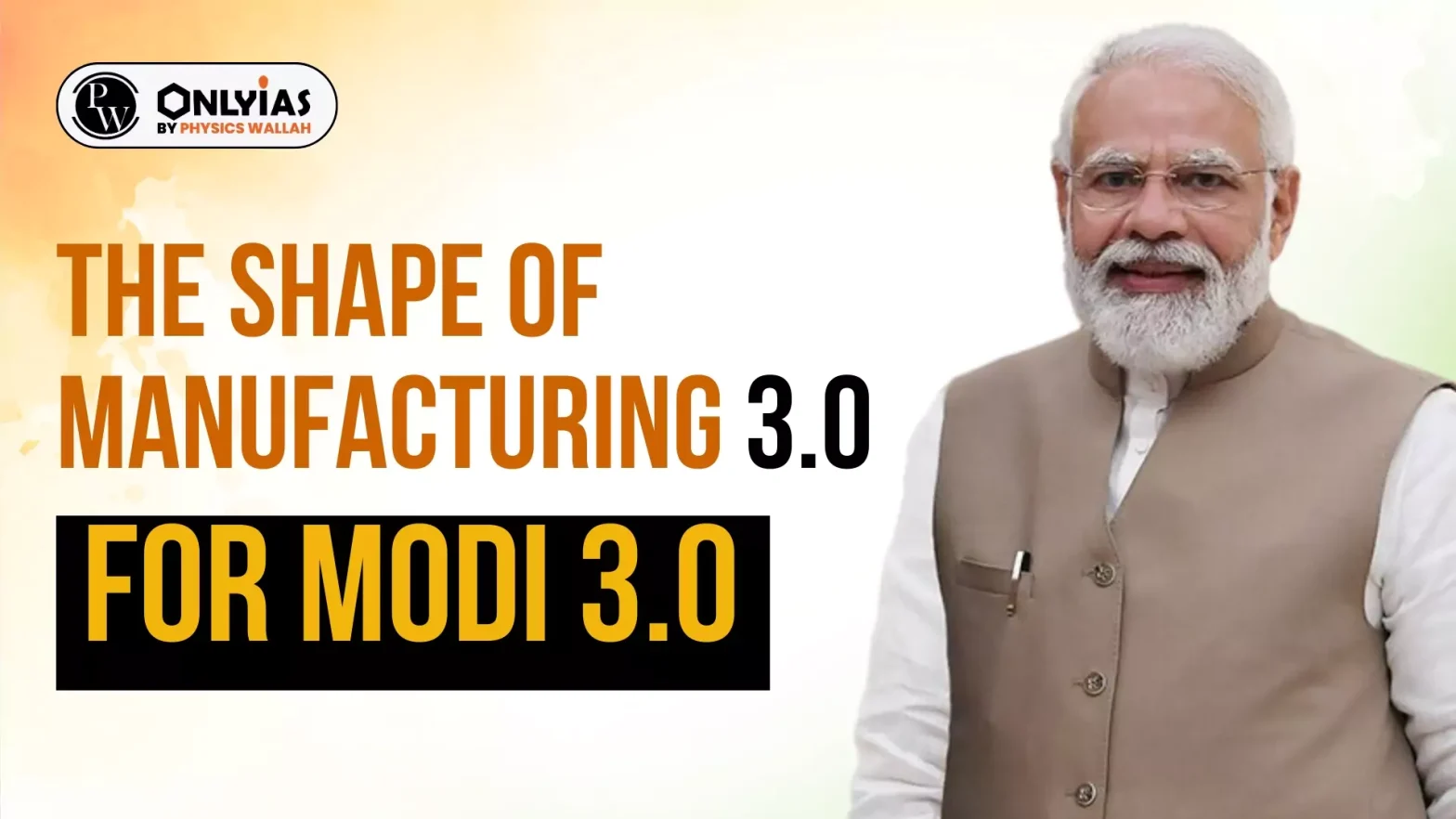The newly formed coalition government in India must redouble its efforts on economic reforms, particularly related to manufacturing.
| Relevancy for Prelims: Manufacturing Sector in India, Associated Government Schemes, Muslin, Make in India, etc.
Relevancy for Mains: Manufacturing Sector in India- India’s Contribution and Statistics, Significance, Challenges, Actions Taken and Measures Need to be Taken, etc. |
About Manufacturing Sector in India
- Refers: The manufacturing sector consists of establishments that are involved in the mechanical, physical or chemical transformations of materials, substances or components to make them into new and finished products.
- Historical Background: Before British colonization, India had a thriving and self-sufficient industrial sector, with industries such as textiles, cotton, silk, and handicrafts.
- India was famous worldwide to produce muslin, a very fine variety of cotton cloth.
- The Statistics: As per World Bank data, manufacturing is in relative decline, making up only 13% of the GDP in 2022.
- This compares unfavorably to markets such as Vietnam (25%), Bangladesh (22%), Malaysia (23%), Indonesia (18%), Mexico (21%), and China (28%).
- Target: In 2014, the government committed to increase manufacturing as a percent of gross domestic product (GDP) from 15% up to 25% by 2025.
- Action Taken: Some significant economic reforms that should have helped to attain the target, most notably the approval of the Goods and Services Tax (GST) in 2017, which largely unified India’s State-level tax codes.
- By GST, logistic costs are reduced by 10-12%.
- Unification of Labour Laws
- Make in India 2.0
- PLI schemes
- Liberalised Foreign Direct Investment (FDI)
- Start-up India
- Atmanirbhar Bharat Campaign
- Special Economic Zones
- MSME Innovative Scheme
- Ease of Doing Business
- Decline in the Sector: India’s continued urbanization resulted in hundreds of millions of agriculture workers relocating to cities to find formal employment in the coming decades.
- A failure to generate low-skilled employment could push staggering stress on India’s governance structures.
Enroll now for UPSC Online Course
Reasons to Improve Manufacturing Base in India
- Powerful Domestic Compulsions: India has a massive employment-creation requirement. About half of Indian labor remains mired in low-productivity agriculture.
- If India’s attempts to enact major farming reforms are successful, there could be a fast, massive transition of employment out of agriculture.
- Maintenance of Goods Trade Deficit: Despite a perception that India is “anti-trade”, India had a little over $1 trillion in goods trade in the last 12 months and a $250 billion deficit during that period.
- Imported Items: Hydrocarbons account for over one-quarter of India’s imports and manufactured goods such as electronics are a substantial component.
- Less Employers: Even though the services sector creates substantial economic output, it employs relatively few workers.
- When India enjoys a large surplus in services trade about $160 billion surplus in the last 12 months on $518 billion in total services trade.
- Others: To boost economic growth, to excel in the defense sector self-reliance, etc.
Role and Stake of United States in India’s Manufacturing Sector
- Improvement in Attractiveness: The U.S. can play a modest but meaningful role in improving the business attractiveness of Indian States.
- This may include:
-
- expanding engagement with Indian States to provide direct guidance on effective economic governance.
- to improve pathways for potential investors to engage with State governments.
- Emerging Role in Regional Security: Improvements to the industrial base will have direct and indirect effects on the ability to underwrite its emerging role in regional security which is increasingly important given China’s rising aggression.
- A Manufacturing Base: Having this manufacturing base in friendly countries improves the viability of U.S. supply chains.
Challenges faced by India
- States and Their Business Environments: The rankings of States’ business environments called the “Business Reforms Action Plan (BRAP)”, has not been updated since the COVID-19 pandemic.
- It is also considered weak as it focused on States’ self-reporting on their local business practices which was often at odds with actual investor experiences.
- States Consent: The central government’s plan to help craft model industry laws for States to consider has been underwhelming.
- Getting all States to focus on thoughtful, transparent industrial policies is a difficult task.
Measures Need to be Taken by India
- Policy Attention: Most factors of production such as electric power, water, sanitation, labor regulations, land acquisition rules, and environment regulations are primarily controlled by India’s State governments.
- Hence, the Indian government needs to provide a much higher degree of policy attention.
- Emphasis on Job-Creation: The government should also consider putting stronger emphasis on job-creating manufacturing sectors such as textiles, paper mills, and furniture, instead of pushing almost exclusively for investments in capital-intensive sectors such as semiconductors and robotics.
- Go beyond Delhi-Mumbai-Bengaluru Circuit: Senior U.S. officials visiting India must commit to engaging a wider set of large States on the importance and opportunity from the current evolution of global supply chains.
- Need for more Investment and Research and Development: It is the need of the hour to tackle issues associated with the manufacturing sector in India and achieve the desired results.
Check Out UPSC CSE Books From PW Store
Conclusion
India’s national election provided an opportunity to assess and redirect policy. But India’s core needs behind the current manufacturing push — jobs, trade, and security — will not change. More work needs to be done to attain desired results, especially at the State level in India, for “Make in India” to further accelerate.
![]() 10 Jul 2024
10 Jul 2024

